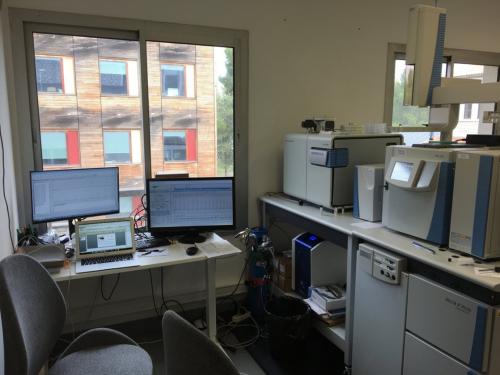Guillaume Leduc, Laurence Vical (CEREGE)
Morteza Djamali (IMBE)
Organic matter isotopy is a powerful tool to address environmental questions in many ways. In the context of climate change, for example, a better understanding of the Mediterranean climate sensitivity to past perturbations can shed light on potential future changes in response to anthropogenic forcings. In this perspective, CEREGE and IMBE have collected terrestrial and marine sediment sequences over the last few years that have been retrieved at key sites over the Mediterranean Basin. Among them, lake sediments in the Moroccan middle Atlas and marine sediments in the Persian Gulf cover the Holocene time period, and comparing hydrological regimes at those two locations can help understand how eastern and western Mediterranean sub-regions may evolve in response to climate change downwind of the Atlantic moisture source.
Such analysis require stable isotopic measurements on compound-specific organic matter with a GC-EA-irMS instrument (not available at CEREGE so far). The objective of the BIO-ISO project is to purchase and install this equipment at CEREGE.
The budget required for the purchase and installation of the GC-EA-irMS was ~300 k€ by the end of 2019 (~230 k€ for the instrument itself and ~70 k€ for infrastructure modifications such as safety surveys, electricity network, gas network, gas detectors, gas hermetic cupboards, etc.).
A GC-EA-irMS instrument was purcahsed and installed at CEREGE in November 2019. It has since been used for :
- a Master 2 project (Elise Luciani), extended into a PhD thesis that will analyse Moroccan and Persian Gulf sediments.
- New collaborations have been established between CEREGE and IMBE (Elena Ormeno-Lafuente) to track the impact of hydrological stress on Mediterranean oaks through C isotopes of leaves, and LAMPEA (Gwenaëlle Goude) to track past changes in womens’ diets in the Neolithic in France and the Mediterranean region through C and N of collagen.
GC-EA-irMS installed at CEREGE
Video for everyone to understand the isotopic method / Video pédagogique pour tous sur la méthode isotopique



